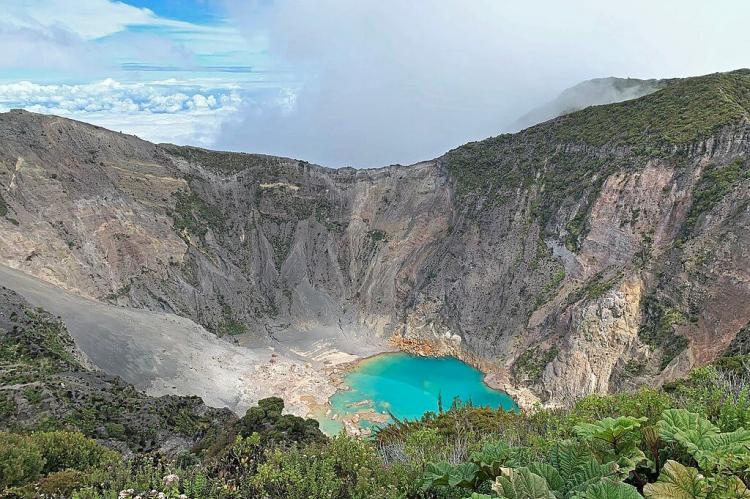Irazú Volcano: Irazú Volcano National Park (Costa Rica)
The Irazú Volcano is an active stratovolcano in the Cordillera Central of east-central Costa Rica. A popular tourist destination, Irazú Volcano National Park is part of the Central Conservation Area of Costa Rica and encompasses the area around the volcano.
Irazú Volcano
The Irazú Volcano is an active stratovolcano in the Cordillera Central of east-central Costa Rica, close to Cartago. With a summit elevation of 3,432 m (11,260 ft), it is Costa Rica's highest active volcano.
The volcano's name originates from the indigenous word for "thunder." In Costa Rica, the volcano is known as "El Coloso" because of the devastation it has caused in the past.
Irazú is the southernmost of the ten Quaternary volcanoes, which form a northwest-trending line through central and northern Costa Rica. The volcano is a complex volcanic shield with an irregular shape, covering an area of 500 sq (190 sq mi).
There are numerous craters atop the volcano. The Main Crater is almost circular, has very inclined walls and measures 1,050 m (3,440 ft) in diameter and 300 m (980 ft) in depth. The Diego de la Haya crater, which contains a green lake, is 600 m (2,000 ft) in diameter, 100 m (330 ft) in depth and filled with volcanic ash. Other craters include Playa Hermosa, La Laguna, and El Piroclastico.
There have been at least 23 eruptions of the volcano since its first historically recorded eruption in 1723. The most significant eruptions took place from 1963 to 1965.
Its historical eruptions generally have a Volcanic Explosivity Index (VEI) of 1 to 3. All historical eruptions have been explosive, and there have been many phreatic eruptions, with some producing pyroclastic flows. The latest eruption lasted only one day and occurred on December 8, 1994.
A popular tourist destination, the Irazú Volcano is easily visited from San José, with a road leading right up to the summit craters and a weekly bus service to the top. The volcano is contained within the Irazú Volcano National Park.
Irazú Volcano National Park
Irazú Volcano National Park is part of the Central Conservation Area of Costa Rica and encompasses the area around the Irazú Volcano in Cartago Province. It has a surface area of approximately 2,000 ha (4,942 acres) and is one of the four national parks within the Cordillera Volcánica Central Biosphere Reserve.
The National Park incorporates what used to be the Ruben Torres Rojas Forest Reserve and is now named the Prusia Forest Reserve. A reforestation project aims to restore the area destroyed by the eruptions. The forest is made up of conifers and other exotic and native species. This native forest consists mainly of oaks and alder and helps protect the watershed of the Reventado River.
Within this protected wilderness area, several streams empty into the Reventazón, Sarapiqui, Sucio, and Toro Amarillo river basins.
Animals in the park, living primarily within the forest, include owls, armadillos, rabbits, hummingbirds and woodpeckers.





